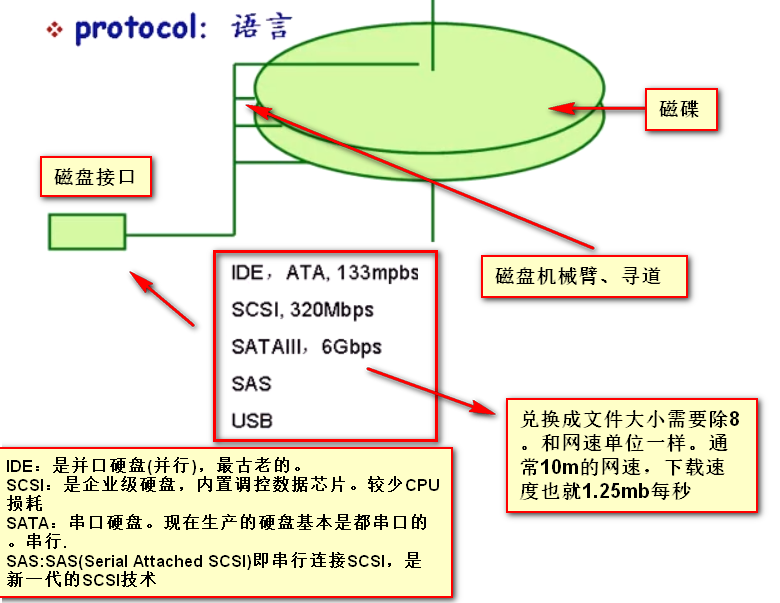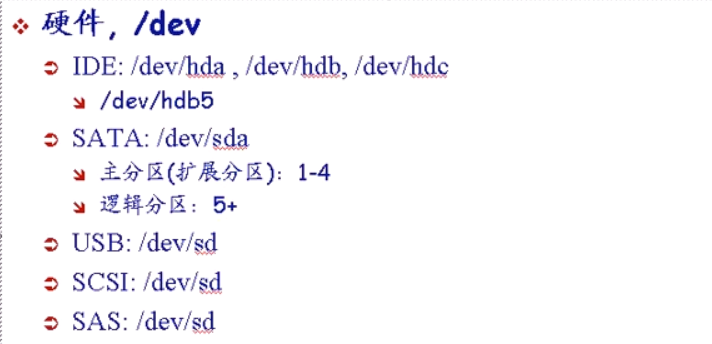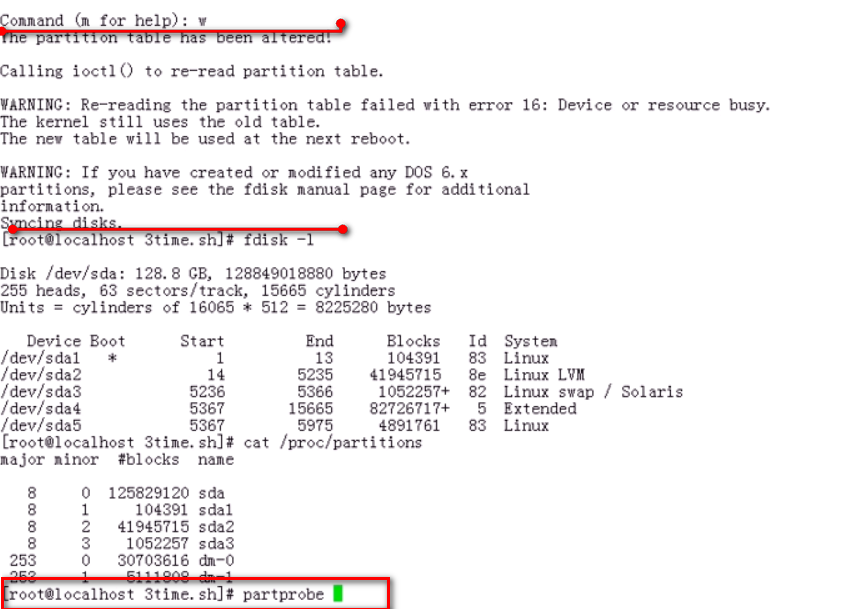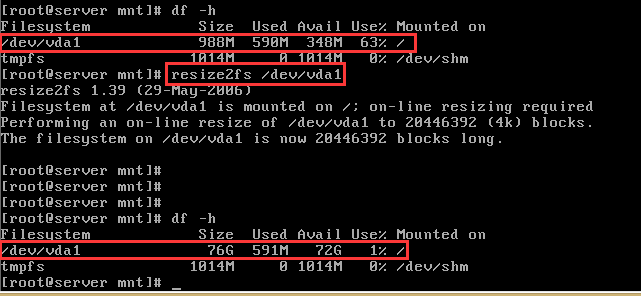磁盘管理
在机械硬盘中、和老版本的硬盘中、出厂的时候进行了“低级格式化”,作用是讲磁盘划分成扇区(sector)每个最小是512bytes(字节)。
磁盘的数据查询(也就是打开软件等)、需要寻找扇区的编号,进行修改删除。
在最前面或最小编号的扇区是个特殊的扇区boot sector

虽然主分区只有4个分区。但是可以把一个主分区拿出来作为扩展分区(进行自我管理分区)。
16byte的主分区表
扩展分区:逻辑概念
扩展分区需要次分区才可以使用—>>逻辑分区。
机械硬盘的结构和接口介绍图

不同接口的硬盘在linux系统文件的表现示意图

使用linux命令查看硬盘分区
centos7中文版命令:
[root@localhost.localdomain ~]
# fdisk -l
磁盘 /dev/sdb:64.4 GB, 64424509440 字节,125829120 个扇区
Units = 扇区 of 1 * 512 = 512 bytes
扇区大小(逻辑/物理):512 字节 / 4096 字节
I/O 大小(最小/最佳):4096 字节 / 4096 字节
磁盘标签类型:dos
磁盘标识符:0x810823f5
设备 Boot Start End Blocks Id System
/dev/sdb1 2048 125829119 62913536 8e Linux LVM
磁盘 /dev/sda:10.7 GB, 10737418240 字节,20971520 个扇区
Units = 扇区 of 1 * 512 = 512 bytes
扇区大小(逻辑/物理):512 字节 / 4096 字节
I/O 大小(最小/最佳):4096 字节 / 4096 字节
磁盘标签类型:dos
磁盘标识符:0x000f1903
设备 Boot Start End Blocks Id System
/dev/sda1 * 2048 1026047 512000 83 Linux
/dev/sda2 1026048 20971519 9972736 8e Linux LVM
磁盘 /dev/mapper/centos-root:73.5 GB, 73513566208 字节,143581184 个扇区
Units = 扇区 of 1 * 512 = 512 bytes
扇区大小(逻辑/物理):512 字节 / 4096 字节
I/O 大小(最小/最佳):4096 字节 / 4096 字节
磁盘 /dev/mapper/centos-swap:1073 MB, 1073741824 字节,2097152 个扇区
Units = 扇区 of 1 * 512 = 512 bytes
扇区大小(逻辑/物理):512 字节 / 4096 字节
I/O 大小(最小/最佳):4096 字节 / 4096 字节服务器英文版的
[root@iZm5e0ssd5luniclrse6wfZ ~]
# fdisk -l
Disk /dev/vda: 107.4 GB, 107374182400 bytes, 209715200 sectors
Units = sectors of 1 * 512 = 512 bytes
Sector size (logical/physical): 512 bytes / 512 bytes
I/O size (minimum/optimal): 512 bytes / 512 bytes
Disk label type: dos
Disk identifier: 0x0000efd2
Device Boot Start End Blocks Id System
/dev/vda1 * 2048 209713151 104855552 83 Linuxlinux磁盘命令之fdisk命令差别

Centos7中对磁盘进行管理
[root@qidong ~]
# fdisk /dev/vda #对vda这个硬盘进行管理
Welcome to fdisk (util-linux 2.23.2).
Changes will remain in memory only, until you decide to write them.
Be careful before using the write command.
Command (m for help): m #帮助
Command action
a toggle a bootable flag
b edit bsd disklabel
c toggle the dos compatibility flag
d delete a partition
g create a new empty GPT partition table
G create an IRIX (SGI) partition table
l list known partition types
m print this menu
n add a new partition
o create a new empty DOS partition table
p print the partition table
q quit without saving changes
s create a new empty Sun disklabel
t change a partition's system id
u change display/entry units
v verify the partition table
w write table to disk and exit
x extra functionality (experts only)
Command (m for help): l 查看分区类型 对应fdisk -l 命令内容中的id
0 Empty 24 NEC DOS 81 Minix / old Lin bf Solaris
1 FAT12 27 Hidden NTFS Win 82 Linux swap / So c1 DRDOS/sec (FAT-
2 XENIX root 39 Plan 9 83 Linux c4 DRDOS/sec (FAT-
3 XENIX usr 3c PartitionMagic 84 OS/2 hidden C: c6 DRDOS/sec (FAT-
4 FAT16 <32M 40 Venix 80286 85 Linux extended c7 Syrinx
5 Extended 41 PPC PReP Boot 86 NTFS volume set da Non-FS data
6 FAT16 42 SFS 87 NTFS volume set db CP/M / CTOS / .
7 HPFS/NTFS/exFAT 4d QNX4.x 88 Linux plaintext de Dell Utility
8 AIX 4e QNX4.x 2nd part 8e Linux LVM df BootIt
9 AIX bootable 4f QNX4.x 3rd part 93 Amoeba e1 DOS access
a OS/2 Boot Manag 50 OnTrack DM 94 Amoeba BBT e3 DOS R/O
b W95 FAT32 51 OnTrack DM6 Aux 9f BSD/OS e4 SpeedStor
c W95 FAT32 (LBA) 52 CP/M a0 IBM Thinkpad hi eb BeOS fs
e W95 FAT16 (LBA) 53 OnTrack DM6 Aux a5 FreeBSD ee GPT
f W95 Ext'd (LBA) 54 OnTrackDM6 a6 OpenBSD ef EFI (FAT-12/16/
10 OPUS 55 EZ-Drive a7 NeXTSTEP f0 Linux/PA-RISC b
11 Hidden FAT12 56 Golden Bow a8 Darwin UFS f1 SpeedStor
12 Compaq diagnost 5c Priam Edisk a9 NetBSD f4 SpeedStor
14 Hidden FAT16 <3 61 SpeedStor ab Darwin boot f2 DOS secondary
16 Hidden FAT16 63 GNU HURD or Sys af HFS / HFS+ fb VMware VMFS
17 Hidden HPFS/NTF 64 Novell Netware b7 BSDI fs fc VMware VMKCORE
18 AST SmartSleep 65 Novell Netware b8 BSDI swap fd Linux raid auto
1b Hidden W95 FAT3 70 DiskSecure Mult bb Boot Wizard hid fe LANstep
1c Hidden W95 FAT3 75 PC/IX be Solaris boot ff BBT
1e Hidden W95 FAT1 80 Old Minix Centos7中
Partition type:
p primary (2 primary, 0 extended, 2 free)
e extended
Select (default p): 在Centos5中继续操作按w保存、因为硬盘正在使用,会报错:

partprobe可以重载分区表
在centos6中
[root@localhost~]#partprobe
Warning: WARNING: the kernel failed to re-read the partition table on /dev/sda (Device or resource busy).
As a result, it may not reflect all of your changes until after reboot.在CentOS5中系统硬盘在分完区后可以直接使用partprobe更新分区,使内核识别分区。
在CentOS6.4中分区完毕后使用partprobe无法更新分区,须重新启动服务或执行partx -a +所要操作磁盘(如partx -a /dev/sda),分区才可以被正常挂载。
以建立/dev/sda7为例:
- partx -a /dev/sda
2 . partx -a /dev/sda7
之后就能成功格式化新分区了
[root@localhost~]#reboot
重启后则可以完成加载分区表的操作。
格式化分区
命令:mkfs
mkfs -t FS_TYPE /dev/device
mkfs -t ext2 = mkfs.ext2例子:mkfs.ext2 /dev/sda5
如果已经是ext2了那么机型属性的更改
命令在使用mke2fs加上-j 是生产Jounal日志系统
查看谁在访问文件系统
命令:fuser -v /media
关闭正在使用的用户和文件系统的关联:fuser -km file
创建虚拟内存swap
虚拟内存必须是独立的文件系统:
意思是必须是单独的一个分区、
1、那么用fdisk 命令创建一份分区
2、在用mkswap /dev/DEVICE
3、swapon -a 启用所有swap分区或swapon /dev/DEVICE
关闭swap分区命令swapoff
补充之磁盘扩充
Windows系统;
在powershell中运行
diskpart
然后运行
list volume
选择磁盘C
select volume c
然后扩展磁盘
extend filesystemLinux系统

直接运行
df –h查看磁盘大小
然后运行
resize2fs /dev/vda1 扩充磁盘空间